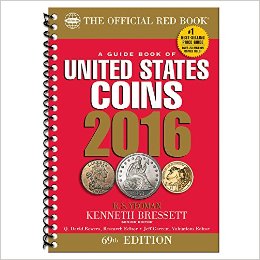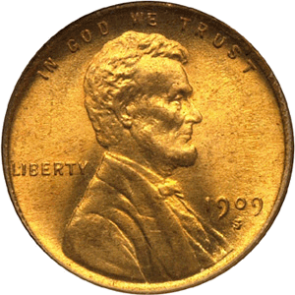If you are getting started from the beginning, then you have a few questions to ask yourself. First, what kind of collector are you? Are you in it for the “thrill of the hunt” tracking down every coin in a series? Or, are you a more “investment oriented” collector interested in creating a numismatic savings account? Perhaps you are a little of both. Either way, the world of numismatics can be overwhelming at first, and it is good to find a focus. For the sake of this series, we’ll assume that you are interested in United States Coins.
 The most useful reference guide is R.S. Yeoman’s Guide to United States Coins also known as the Red Book.
The most useful reference guide is R.S. Yeoman’s Guide to United States Coins also known as the Red Book.
I strongly suggest picking up a copy. It is a comprehensive guide to all of the critical information that you need for every coin minted since the colonies began striking coins in North America. I recommend flipping through the book and see what captures your attention. The series that really stands out to you is the best place to start. The most commonly collected series are Lincoln Cents and Morgan Silver Dollars.
 Both of these series are very easy to get started with, and very difficult to complete. Perhaps you don’t have a particular series that stands out from the rest. If that’s the case, then I recommend starting with a type set. A type set is a collection where the collector obtains one of every different type of coin produced by the U.S. Mint. Type sets can also be broken down into smaller sets. Common subsets include collecting one of each material such as gold, silver, or copper type sets, collecting one of each denomination such as silver dollar, dime, or nickel type sets, or collecting one of each coin minted during a particular time period; such as a 20th century type set, colonial type set, or World War II type set. No matter your focus, the next step is to determine your budget. It doesn’t take long looking through the Red Book to see that some coins are worth their own face value, while some cost more than the value of a house. Determine what you can afford each month and stick to your budget. Some months you may be able to buy a few coins, and some times you may have to save for a few months to buy a more expensive piece.
Both of these series are very easy to get started with, and very difficult to complete. Perhaps you don’t have a particular series that stands out from the rest. If that’s the case, then I recommend starting with a type set. A type set is a collection where the collector obtains one of every different type of coin produced by the U.S. Mint. Type sets can also be broken down into smaller sets. Common subsets include collecting one of each material such as gold, silver, or copper type sets, collecting one of each denomination such as silver dollar, dime, or nickel type sets, or collecting one of each coin minted during a particular time period; such as a 20th century type set, colonial type set, or World War II type set. No matter your focus, the next step is to determine your budget. It doesn’t take long looking through the Red Book to see that some coins are worth their own face value, while some cost more than the value of a house. Determine what you can afford each month and stick to your budget. Some months you may be able to buy a few coins, and some times you may have to save for a few months to buy a more expensive piece.

Now that you have determined what you want to collect and how much to spend each month here in Part 1, it’s time to delve deeper into your numismatic journey. In the next installment of Coin Coin Collecting for Fun and Investment Part 1 we’ll look at coin grading and the other factors that go into determining a coin’s value.


